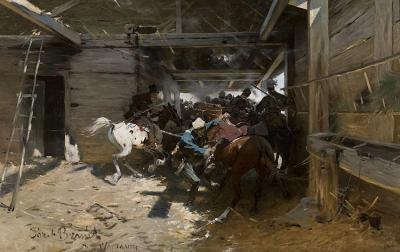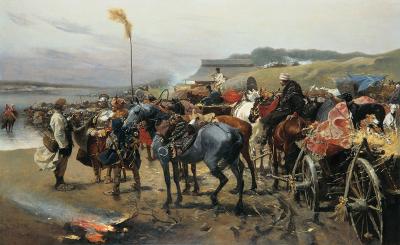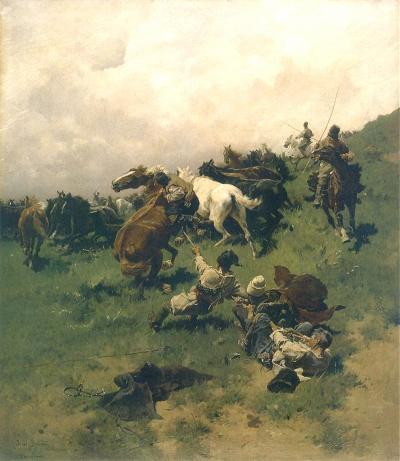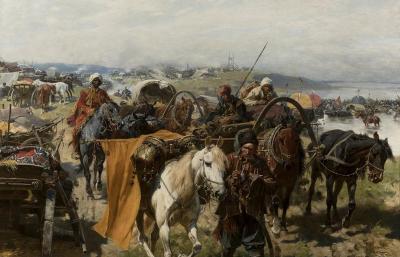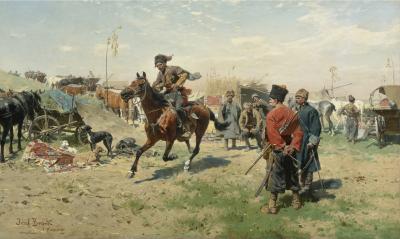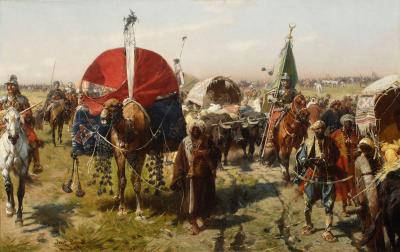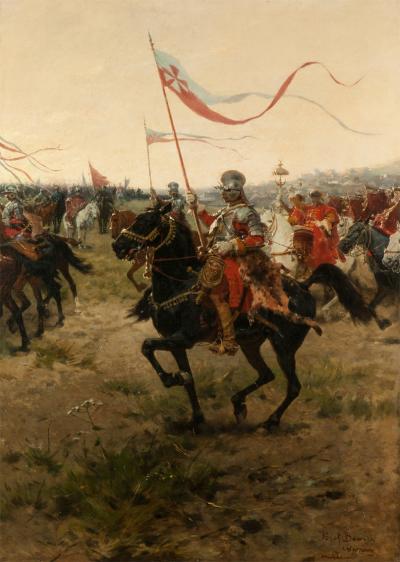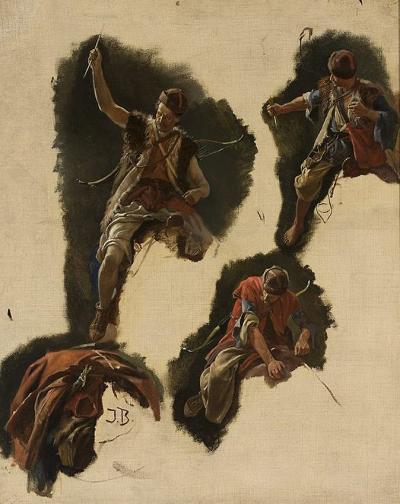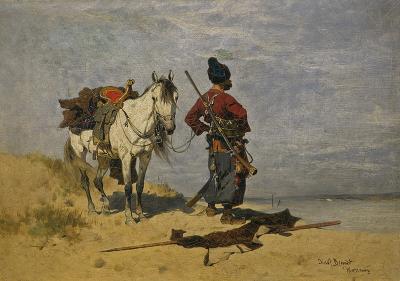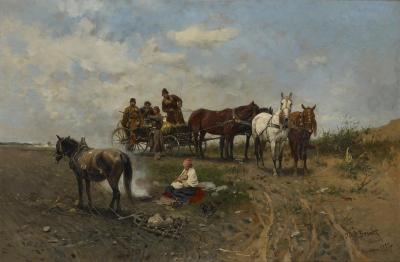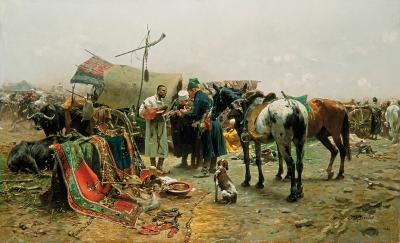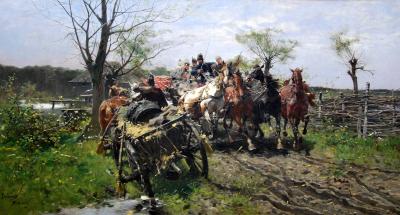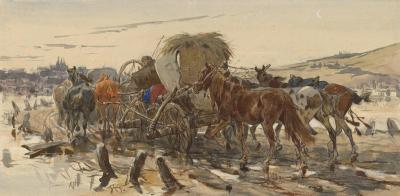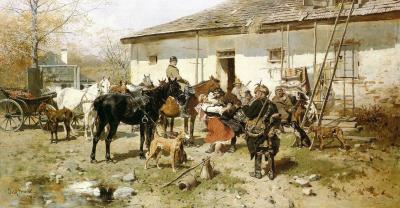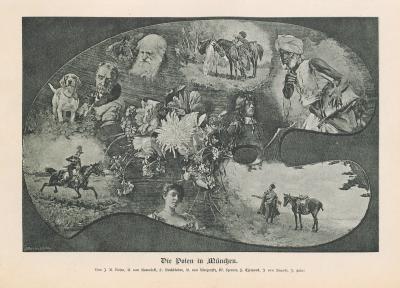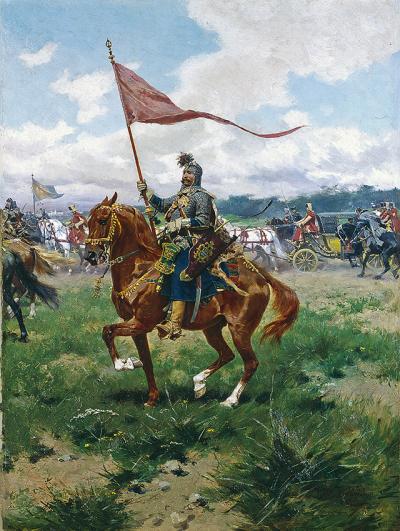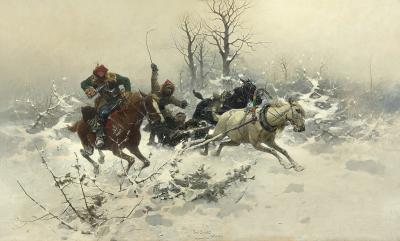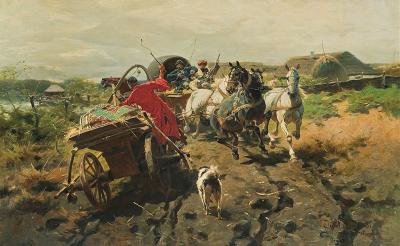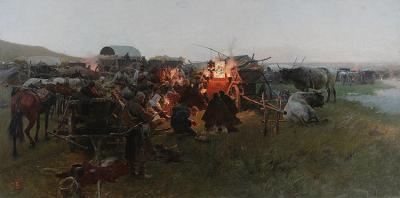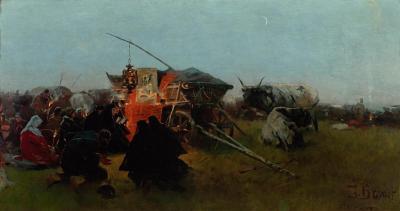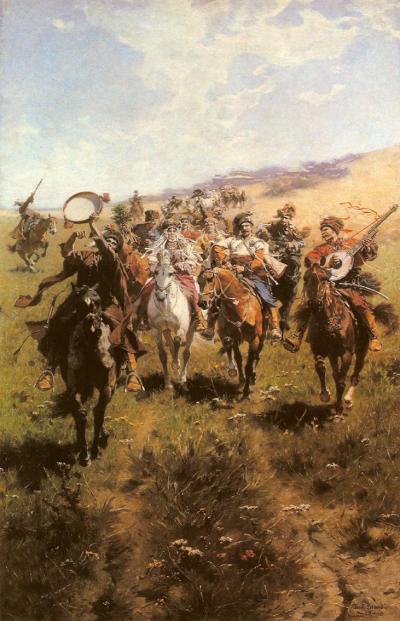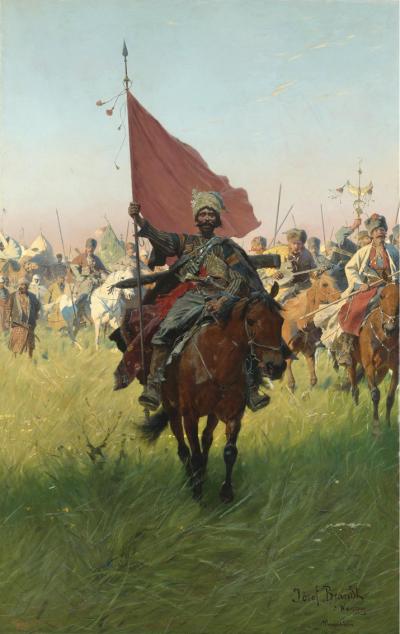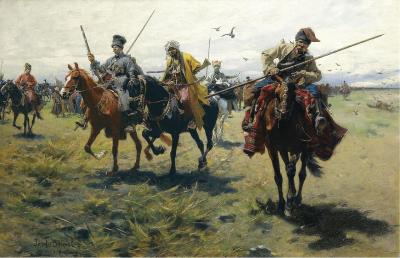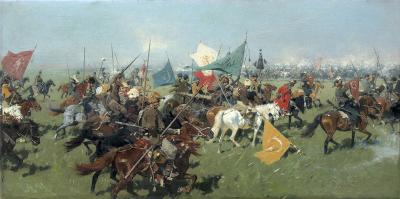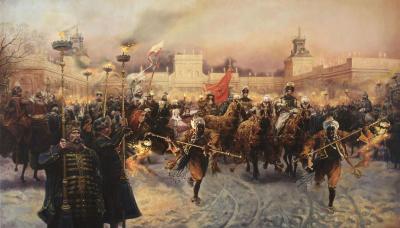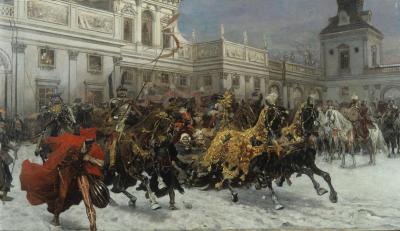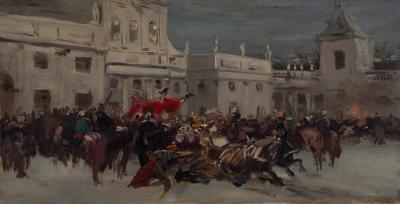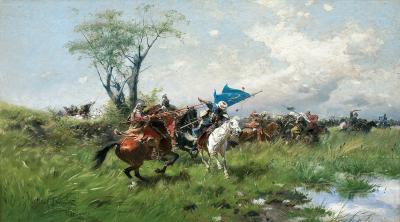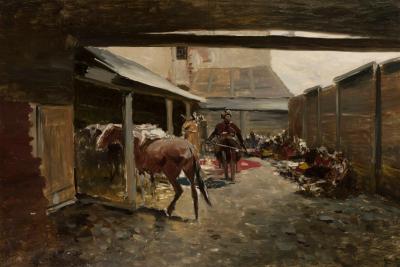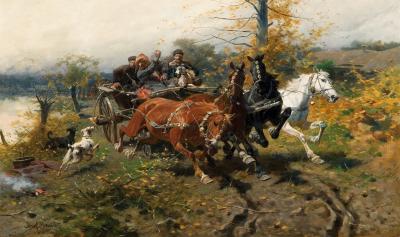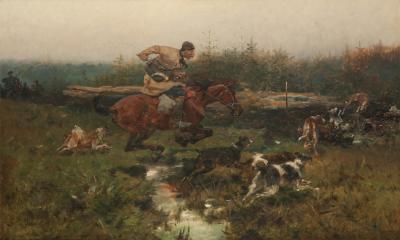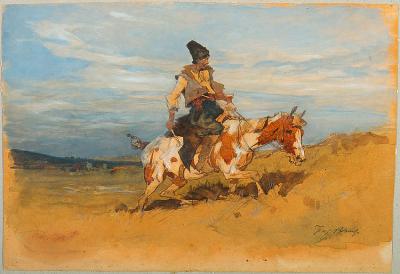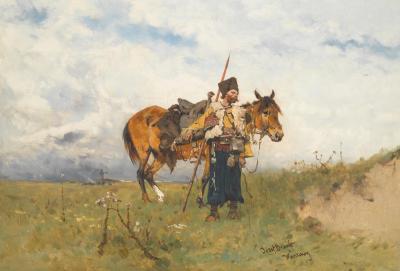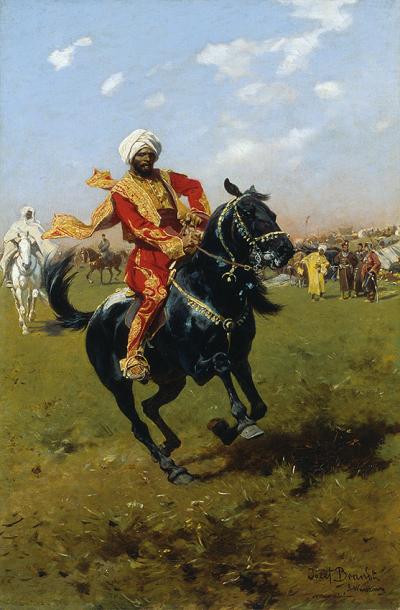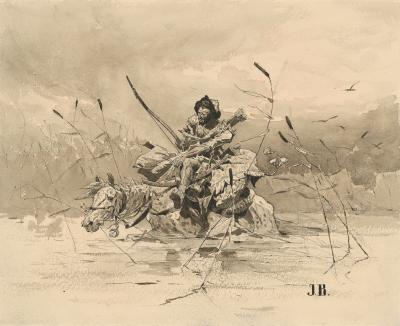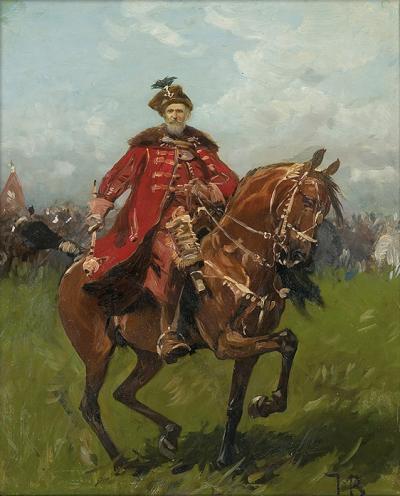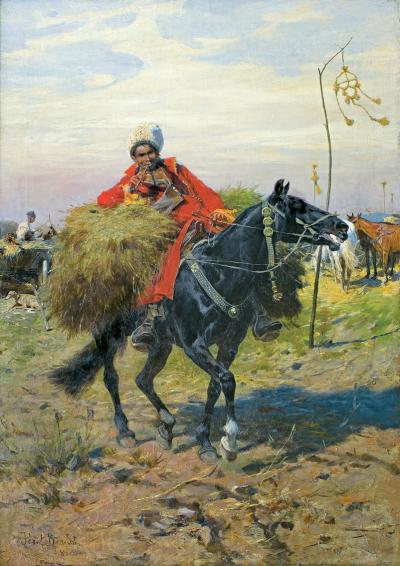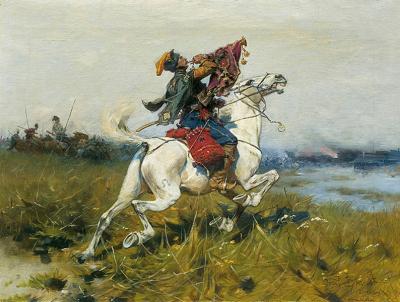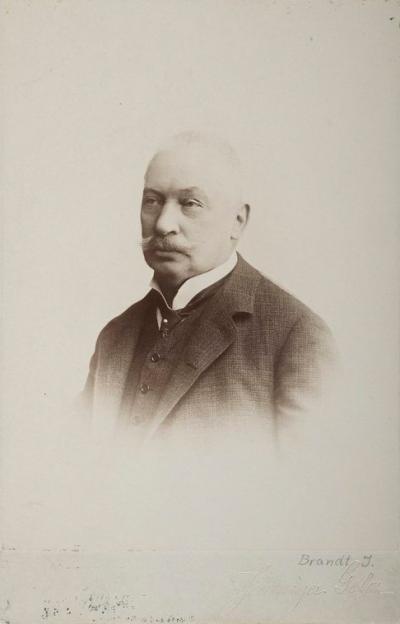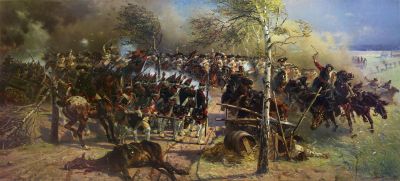Józef Brandt
Mediathek Sorted

Following the marriage of Brandt and Helena Pruszak in 1877, the couple spent the summer months from June to October in Orońsko, and the rest of the year in Munich. Helena brought two children from her first marriage, Maria Magdalena (*1868) and Władysław Aleksander (*1871), whom Brandt lovingly cared for. Two children of their own, Maria Krystyna and Maria Aniela, were born in Orońsko in 1878 and 1880. Maria Aniela was baptized in Munich where her godfather was Prince Luitpold of Bavaria.[60] In Munich, the family lived on the first floor of a block of flats in Barerstrasse in sight of the Neue Pinakothek.[61] The couple took part in the social life of the city and the Polish colony and regularly received friends and acquaintances on Sundays. In Orońsko Brandt led the life of a landlord. He managed his estate in an exemplary manner, built up a cattle and horse breeding business with which he won prizes at agricultural exhibitions, built stables and a smithy, and rode out every afternoon. Brandt's studio was located in the estate orangery where Helena had once played piano.[62] Here he set up courses in open-air painting for his Munich students, painter friends and their pupils. It was not long before it bore an unofficial name: the Free Academy of Orońsko. Its regular guests included Ajdukiewicz, Kazimierz Alchimowicz, Chełmiński, Czachórski, Ejsmond, Józef Kania, Kossak, Apoloniusz Kędzierski (who came here for nine years), Artur Potocki, Rosen, Roubaud, Szerner, Wankie, Wierusz-Kowalski and Marian Zarembski. They did not restrict their activities simply to painting but also went out riding and hunting.[63]
Brandt radically changed his painting style around 1880. The motifs in his military pictures that were primarily dedicated to depicting Zaporozhian cossacks at the lower course of the Dnieper River were now much denser and hence more dramatic (fig. 26, 28, 30, 42). With regard to his more tranquil motifs, this closer view created a narrative style with detailed insights into the wagons and tents, a more precise depiction of costumes and a more intensive characterization of the horses (fig. 27, 29). A study of different Cossack postures (1880, fig. 33) documented the effort to reproduce narrative drama in an anatomically precise manner. Such motifs were replicated in the studio by the painter himself or by models on a wooden horse. The "March with War Booty" (circa 1880, fig. 31) depicts a scene after the Battle of Vienna in 1683, in which Polish hussars lead off colourful and highly picturesquely dressed soldiers in the Ottoman army, including Africans. The detailed portrayal of a camel and an ox-cart, laden with colourful carpets and showing women wearing oriental headdress, illustrates Brandt's closeness to Orientalist painting. His "Cavalry Parade" (fig. 32) and a single "Royal Ensign" (1889, fig. 41) also show Polish hussars after their victory over the Turks at Vienna. This theme also included a later painting: a "Cavalry Attack" on fleeing Ottomans (1898, fig. 53). During the 1890s, he created many pictures of "victorious Cossacks" (1893, fig. 47-49) in the Polish-Ottoman War.
[60] Pruszak 2015 (see note 24), page 63 f.
[61] Adressbuch von München für das Jahr 1885, page 58: „Brandt, Jos. v. k. Prof. Historien- u. Schlachtenmal. Ehrenmitgl. d. Akadem. Barerstr. 31 1.“; Digital version: http://daten.digitale-sammlungen.de/bsb00096298/image_86 (called up on 22.11.2017)
[62] Pruszak 2015 (see note 24), page 67-69
[63] Ibid, page 67; Centre of Polish Sculpture in Orońsko, History, Józef Brandt; online: http://www.rzezba-oronsko.pl/EN/index.php?history,64 (called up on 22.11.2017)

















































































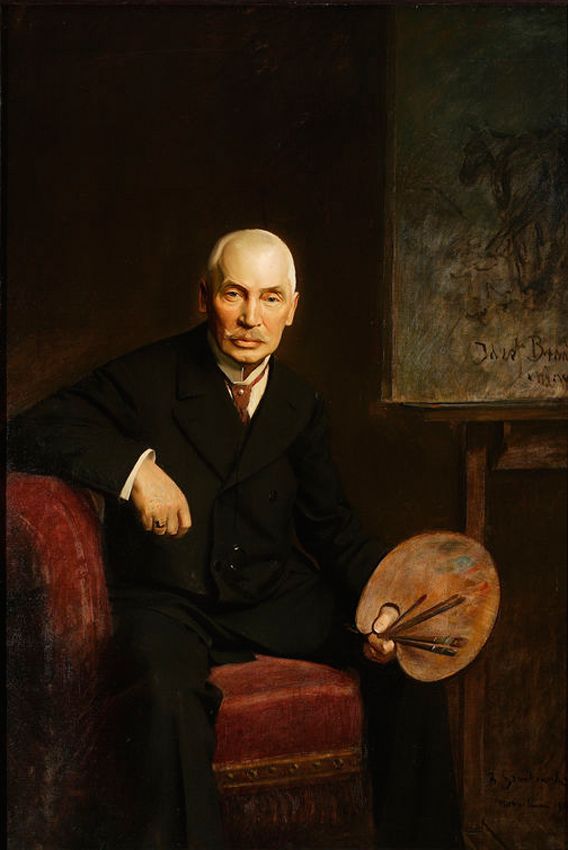
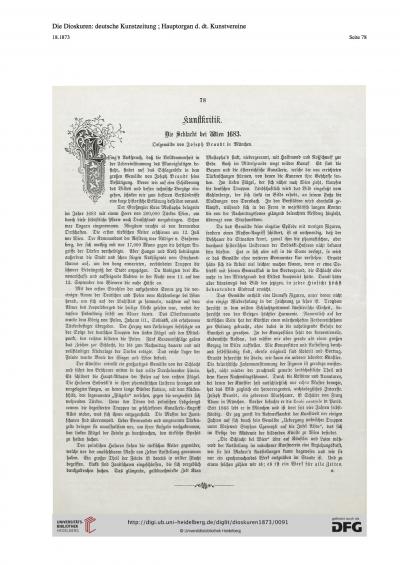
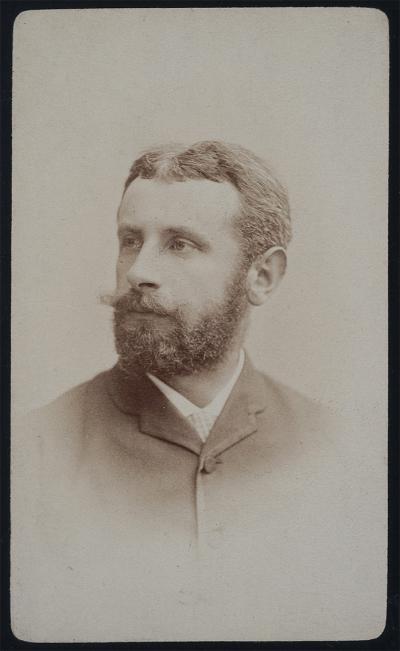
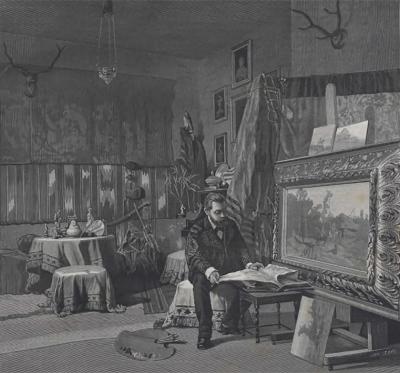
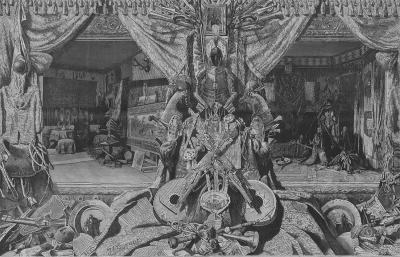
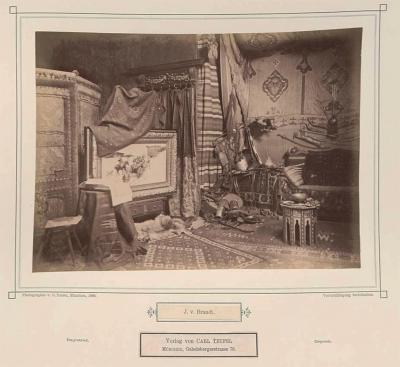
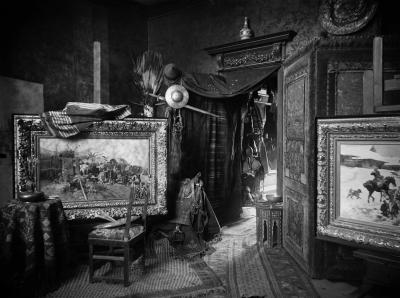
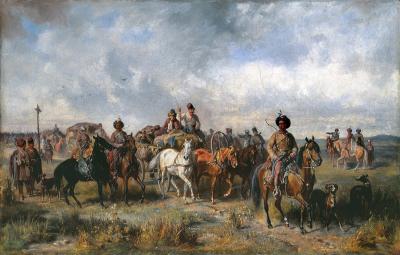
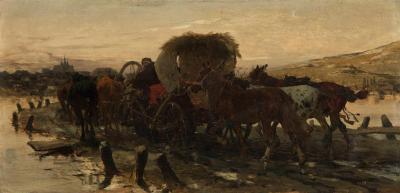
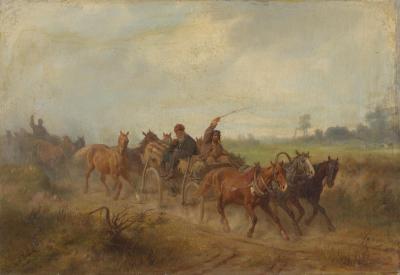
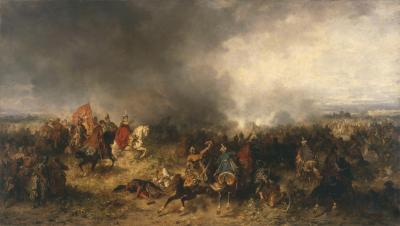
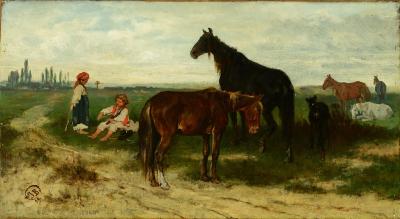
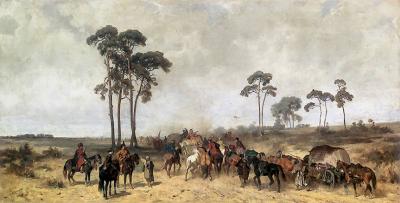
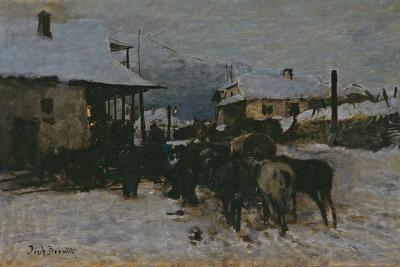
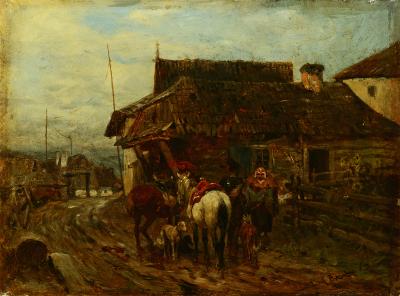
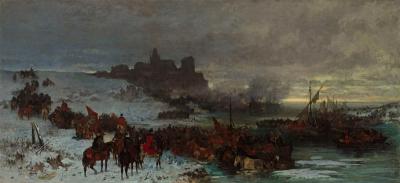
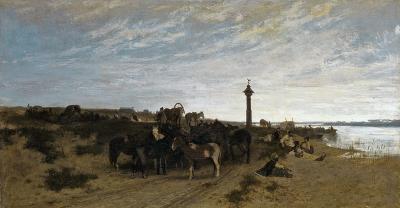
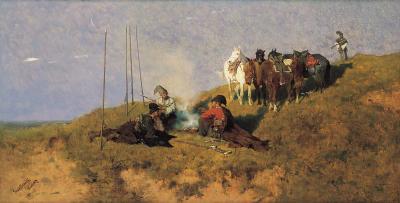
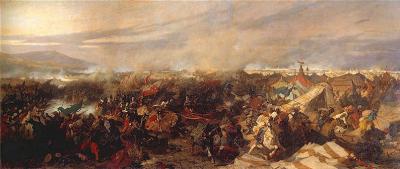
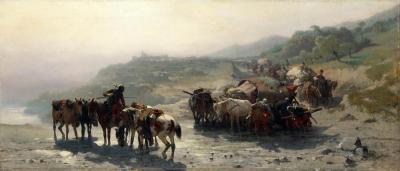
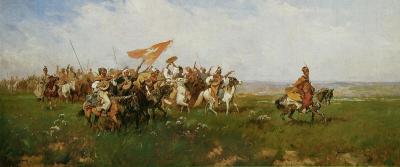
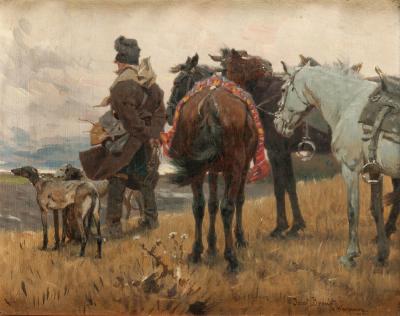
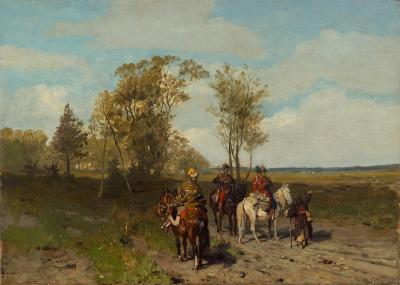
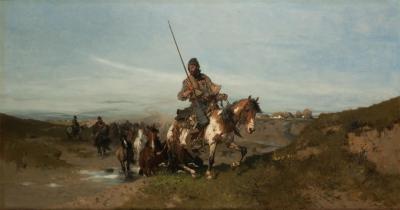
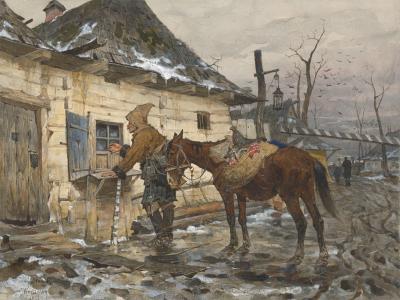
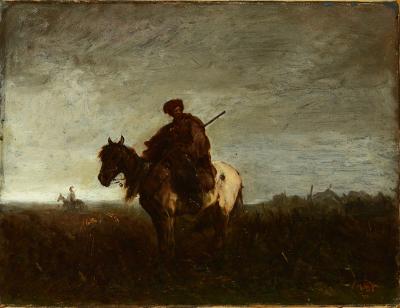
![Fig. 25: The Liberation of Prisoners, 1878 Fig. 25: The Liberation of Prisoners, 1878 - The Liberation of Prisoners [from the hands of Tatars], 1878. Oil on canvas, 179 x 445 cm, National Museum Warsaw/Muzeum Narodowe w Warszawie](/sites/default/files/styles/width_100_tiles/public/assets/images/25_befreiung_der_gefangenen_1878_mnw_cyf.jpg?itok=i5_t7XqM)
